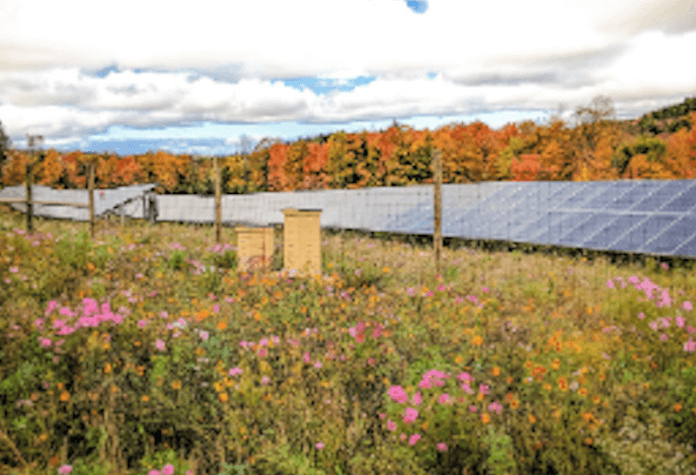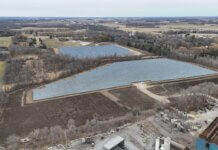Encore Renewable Energy, a company that specializes in the design, development, financing, permitting and construction of solar and energy storage projects, and Greenbacker, a limited partnership that makes corporate debt and equity investments in sustainable infrastructure development companies, have entered into a new agreement for the completion of 14 solar projects aggregating to 28 MW of capacity with pollinator-friendly ground cover.
This initiative builds on the recently announced partnership and offers an opportunity to provide over 200 acres of habitat necessary for increasing the populations of pollinators such as bees and monarch butterflies. These important species, critical to the health of our future food supply, are declining from widespread insecticide and herbicide use in addition to habitat loss from climate change and land development activities. These new pollinator-friendly solar sites will support diverse and healthy pollinator populations with a diverse mix of native grasses and flowering plants.
“This agreement is the perfect example of a successful triple bottom line endeavor,” says Chad Farrell, founder and CEO of Encore Renewable Energy. “We are creating environmentally sustainable ground cover that improves soil quality, fixes roots into the ground and channels stormwater back into underlying aquifers – while addressing the social importance of supporting healthy food systems. These impacts will extend beyond the boundaries of each of these solar projects to support other species who rely on strong pollinator populations including birds, fish, other animals and, ultimately, all of us as well.”
The higher upfront costs of establishing pollinator-friendly ground cover in Vermont and Maine are offset by long term savings for vegetative management. Pollinator-friendly ground cover at solar sites also allows for healthy plant ground cover that shades the soil, creating cooler ground conditions that may mitigate the negative effects of heat on solar energy production. Finally, the local communities around these projects will benefit as well, as research shows pollinator-friendly solar sites may increase the yields of some nearby crops.
Scientists predict farmers and other landowners will lease more than 2 million acres of land for photovoltaic solar projects by 2030 – an increase from around 300,000 acres today. But these facilities are looking more and more like traditional farms every year. With support from the Solar Energy Technologies Office of the U.S. Department of Energy, scientists at the National Renewable Energy Laboratory (NREL) are conducting research into low-impact solar development designs that provide dual-uses and co-benefits to agriculture and ecosystems.
The NREL study, named InSPIRE, is also showing how low-impact solar designs can reduce costs and increase operating efficiency because of reduced mowing and the creation of a cooler micro-climate under the panels. More than a dozen states have adopted land use standards to encourage pollinator-friendly ground cover under and around the panels on solar facilities ranging from a few to a few thousand acres.




